Resident Evil 4 retrospective: Why Capcom's 2005 action masterpiece is still without peer
We might never see another game like Resident Evil 4. 2021 can't cope with such weird, beautiful, ambitious excess
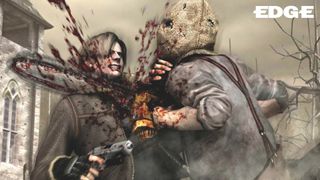
More than ten years later, it still hasn't been topped: Resident Evil 4's opening remains the yardstick by which all others must be measured. No doubt some will make a compelling argument for The Last Of Us, though repeat plays reveal how Naughty Dog ensures the player's arms and legs are kept firmly inside the ride at all times. Inside this spartan Spanish village, however, you're the one pushing things forward: barricading doorways, leaping through windows, sprinting, spinning, shooting, kicking.
Three, four, five plays later this exhilarating fusion of scripting and player-prompted mayhem still has the capacity to unsettle, from a glimpse of the immolated corpse of the policeman who drove you here to that first yelp of "un forastero", through to the insistent revving of a chainsaw motor to the pealing bells that cause los ganados to (quite literally) down tools and trudge off to their place of worship. And then, of course, that wonderfully absurd wisecrack – "Where's everyone going? Bingo?" – invites you at last to take a breath. Such is the intensity of the ordeal that it's a shock to discover that it's only about five minutes of game time. It feels like a landmark moment, and it is. So why, then, given the advancements in technology and game design since, have we seen nothing to match it?
Often copied, but impossible to repeat
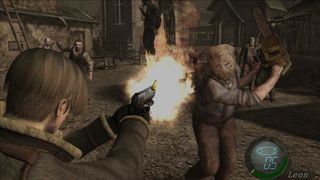
The legacy of Shinji Mikami's opus is reported as a simple matter of fact. Its status as a game of magnitude and influence is never really questioned, but in truth it's not quite the pioneer it's often made out to be. Which isn't to say it hasn't had an impact: its over-the-shoulder camera was imitated by a number of thirdperson shooters during the following console generation, with Dead Space in particular owing Capcom a fairly substantial debt. But it was most vocally acknowledged by Cliff Bleszinski during development of Gears Of War, and it was Epic's game that would go on to become the established genre template.
While the two games share a similar perspective, their approach to combat is markedly different. In Resident Evil 4 you're rarely given the luxury of hunkering down behind conveniently placed waist-high barriers; rather, you're expected to either provide your own cover or fire from an exposed position, planting your feet to commit to every shot, rather than cowering and sporadically popping up to let off a few rounds before roadie-running to the next position of relative safety. Rarely are you left feeling quite as vulnerable as Mikami insists you should be – even when Leon S. Kennedy hoiks a rocket launcher onto his shoulder and takes aim.
Play it again now and it takes some time to reacclimatise; we're accustomed to being able to move and fire simultaneously these days, after all. Resident Evil 4's controls were described as a step forward for the series but, in actuality, little had changed beyond the camera. Leon still moves like a tank, turning on the spot and only stepping forward when you nudge the analogue stick upward. Raising your weapon, meanwhile, gives you no choice but to literally stand your ground, ensuring you've created enough space between you and the enemy to sit through those elaborate (and heart-stoppingly tense) reload animations.
If it seems to throw out much of what people loved about its predecessors, its combat still creates a similar sense of throat-tightening claustrophobia. You may find yourself in more open environments than before, but your field of vision – and thus your aim – is still limited. It's an approach modern players, accustomed to greater freedoms in control, will often react angrily against – tellingly, the letterbox presentation and narrow FOV of Mikami's The Evil Within, designed to evoke a similarly oppressive ambiance, was divisive enough to prompt calls for a border-free option, subsequently patched in by Bethesda.
The style is the substance
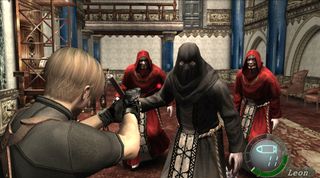
This isn't simply a case of changing tastes or emerging trends in game design, however. It's also a matter of thematic differences. Mainstream audiences have a greater appetite for realism, which now extends to fantasy: the success of Game Of Thrones, for example, says much about our desire for any piece of fiction that dabbles in the supernatural or otherworldly to somehow reflect real-world concerns.
Sign up to the GamesRadar+ Newsletter
Weekly digests, tales from the communities you love, and more
Pulpy pop entertainment like Resident Evil 4 is no longer appreciated by the world's tastemakers, while the horror genre has changed, too – irrevocably influenced by the rise of found-footage and torture porn that's since generated a very different brand of shocker. In the current climate, something as campy and silly as this is the kind of passé that has financiers sweating.
All of which would matter little if it was still commercially viable. But part of the reason Resident Evil 4 occupies a unique place in the medium's history is it's now financially prohibitive to make a 20-hour singleplayer game with so many bespoke elements. During the sixth console generation, Capcom was in a position where it could not only indulge Mikami's wishes to incorporate hundreds of individual assets and systems in a campaign of unrivalled pacing and variety, but also scrap two years of development on a very different version of the game to facilitate this new vision. Now, the market has no place for such whims.
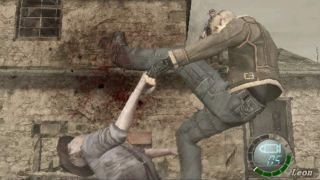
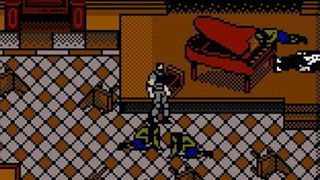
Charting the complete history of the Resident Evil games – from the evolution of the mainline games to the weird and wonderful spin-offs
The rise of the open-world game is a testament not just to player perception of value but to publisher perception of efficiency: if sandbox games often bear the hallmarks of copy-pasting, that's because procedural design and other contemporary techniques allow developers to fill larger spaces with repurposed content. If a core mechanic is satisfying enough, most players will be happy to deal with it being repeated ad infinitum.
While these games invite us to embrace the comfort and familiarity of routine, the beauty of Resident Evil 4 is that it never once allows you to. Sniping sequences segue into puzzle interludes, with the briefest of lulls before a blistering siege or a boss battle. Not all of these are made equal, but each is unique: the first three alone see you harpooning a serpent on a murky lake, ducking the powerful attacks of a towering brute, and tackling an agile mutant that hangs from the rafters of a burning barn.
It's hard to think of a single game released since that so often seeks to shift its tempo, to surprise the player with something new and exciting, whether it's a terrifying, rasping wheeze heralding the imminent arrival of a creature that can only be conquered with the help of thermal vision, or one-off shocks like the sudden lunge of the enemy affectionately known as Oven Man.
Too weird to live again, too rare to ever die
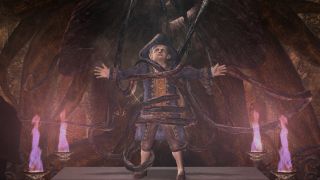
Even during its less celebrated sequences, it belligerently refuses to let its players settle, exemplified in the moment a headshot fails to halt an advancing villager, instead prompting the emergence of a writhing parasite from his neck. It's a startling subversion of a series staple; that aiming for the skull is an essential way to conserve ammo. Here, you're never in quite such short supply, though more daring players can save time and rounds by targeting limbs, leaving enemies vulnerable to a kick or suplex – though kneecapping a cultist is a challenge when he's clutching a wooden shield. You might prefer to stick with one or two favourites from a varied arsenal, but the encounter design will regularly force you to refresh your tactics.
Capcom itself has tried in vain to recapture the magic. President's daughter Ashley proved not to be the hindrance many had feared; when she isn't a resourceful ally, she's smart enough to get out of harm's way by hiding in a dumpster. By contrast, Resident Evil 5's Sheva Alomar can't help but frequently step into partner Chris Redfield's line of sight, or blunder into the arms of an infected opponent. Resident Evil 6 brought back Leon, but limited his role in a campaign that suggested Capcom had only handed a third of it to its quality assurance department. Spinoff Umbrella Corps, meanwhile, suggests the publisher simply doesn't understand what made the village so iconic, repurposing it as a map in a generic online shooter.
Our expectations may be unfair. As time passes, it increasingly feels as if Resident Evil 4 might've been bottled lightning: a perfect confluence of timing and talent never to be recreated. A director at the peak of his creative powers, helming a team with meaningful design experience and genre expertise. A publisher in a position to take risks and spend big on experiments with existing formulae. A playerbase willing to embrace a linear game that offers enough space for them to improvise. Maybe this wasn't actually everything games could be, but everything games were, and could never be again. At that time, few could've foreseen that the end of the PS2 era would represent the beginning of an era of western dominance; that Japan's status as the gaming superpower would soon be over.
Perhaps, then, this wasn't the shape of things to come so much as the final flourish at the end of an era: a game that said "top that!" in the knowledge no one else had the competence nor the resources to do so. And part of what makes Resident Evil 4 so exciting to this day is the knowledge no one has quite been able to follow in its footsteps. You can see something of its playfulness, its intricacies, and its hunter/hunted dynamic in the work of FromSoftware, but the likes of Bloodborne and Dark Souls are ultimately very different games in tone and tenor. So many years on, maybe it's time to come to terms with the fact that we might never see anything quite like Resident Evil 4 again. But that's OK. We still have Resident Evil 4.
This feature first appeared in Edge magazine. For more like it, subscribe to Edge and get the magazine delivered straight to your door or to a digital device.

Chris is Edge's deputy editor, having previously spent a decade as a freelance critic. With more than 15 years' experience in print and online journalism, he has contributed features, interviews, reviews and more to the likes of PC Gamer, GamesRadar and The Guardian. He is Total Film’s resident game critic, and has a keen interest in cinema. Three (relatively) recent favourites: Hyper Light Drifter, Tetris Effect, Return Of The Obra Dinn.
Most Popular



